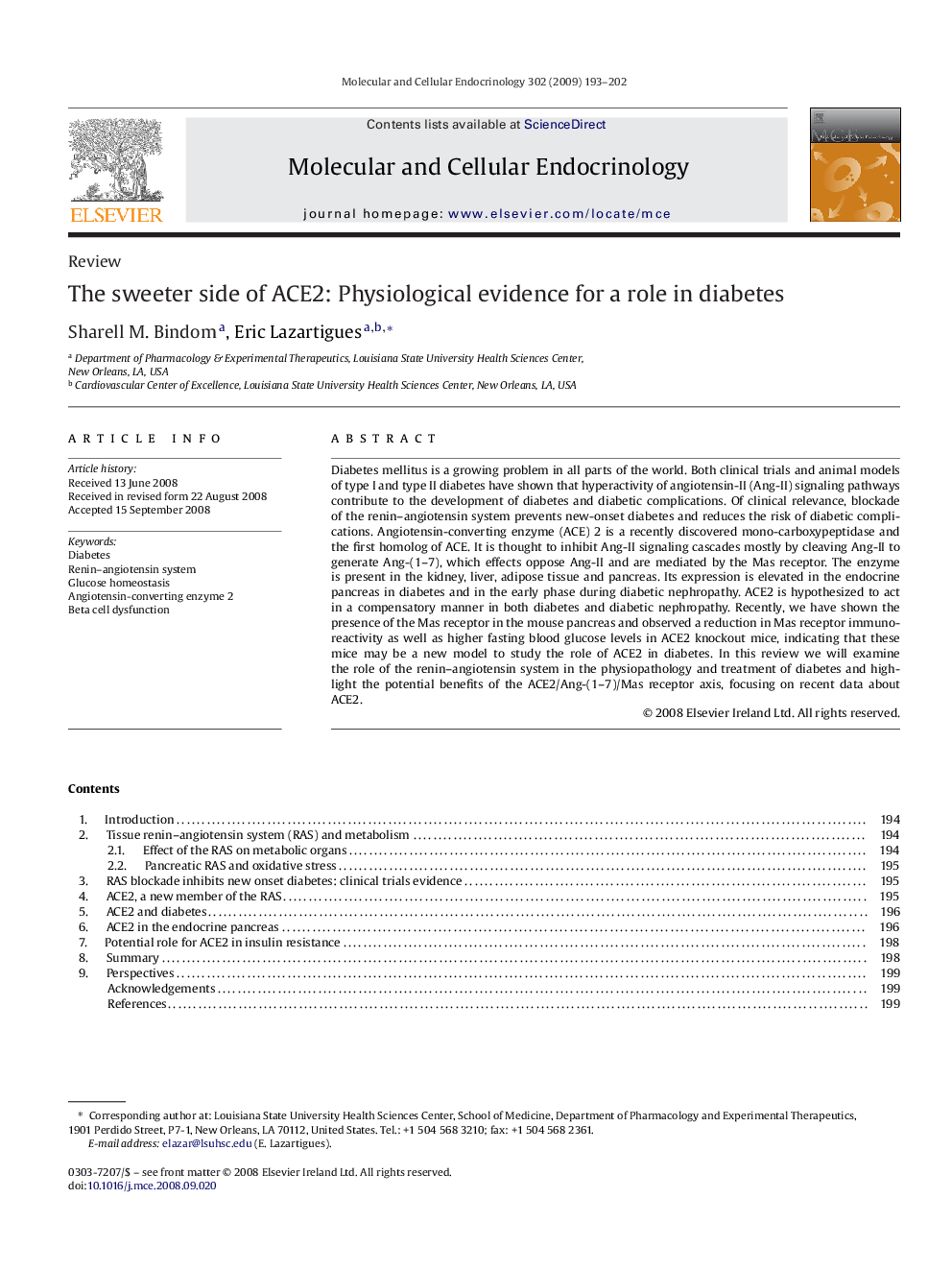| کد مقاله | کد نشریه | سال انتشار | مقاله انگلیسی | نسخه تمام متن |
|---|---|---|---|---|
| 2197219 | 1098873 | 2009 | 10 صفحه PDF | دانلود رایگان |

Diabetes mellitus is a growing problem in all parts of the world. Both clinical trials and animal models of type I and type II diabetes have shown that hyperactivity of angiotensin-II (Ang-II) signaling pathways contribute to the development of diabetes and diabetic complications. Of clinical relevance, blockade of the renin–angiotensin system prevents new-onset diabetes and reduces the risk of diabetic complications. Angiotensin-converting enzyme (ACE) 2 is a recently discovered mono-carboxypeptidase and the first homolog of ACE. It is thought to inhibit Ang-II signaling cascades mostly by cleaving Ang-II to generate Ang-(1–7), which effects oppose Ang-II and are mediated by the Mas receptor. The enzyme is present in the kidney, liver, adipose tissue and pancreas. Its expression is elevated in the endocrine pancreas in diabetes and in the early phase during diabetic nephropathy. ACE2 is hypothesized to act in a compensatory manner in both diabetes and diabetic nephropathy. Recently, we have shown the presence of the Mas receptor in the mouse pancreas and observed a reduction in Mas receptor immuno-reactivity as well as higher fasting blood glucose levels in ACE2 knockout mice, indicating that these mice may be a new model to study the role of ACE2 in diabetes. In this review we will examine the role of the renin–angiotensin system in the physiopathology and treatment of diabetes and highlight the potential benefits of the ACE2/Ang-(1–7)/Mas receptor axis, focusing on recent data about ACE2.
Journal: Molecular and Cellular Endocrinology - Volume 302, Issue 2, 29 April 2009, Pages 193–202